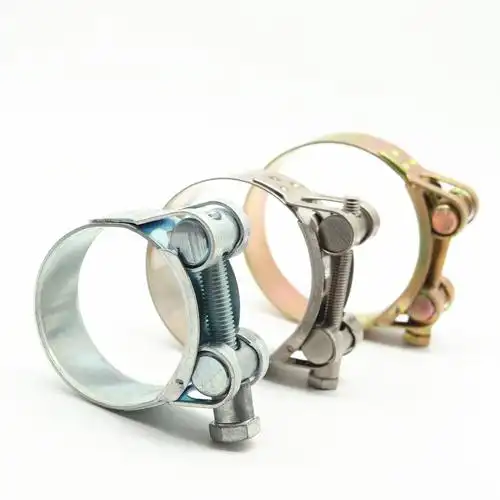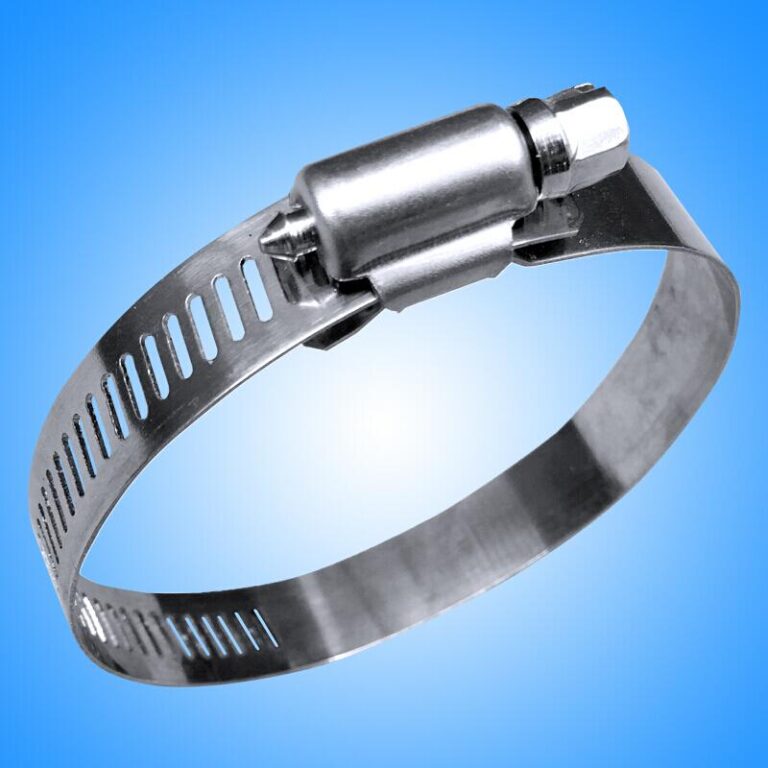Radiator Hose Clamps-Essential Components for Vehicle Cooling Systems
Radiator hose clamps, also known as hose clips or hose clamps, are critical components in the cooling systems of vehicles….
Radiator hose clamps, also known as hose clips or hose clamps, are critical components in the cooling systems of vehicles. They are designed to secure hoses to the radiator, heater core, water pump, and other components to ensure efficient heat transfer and prevent coolant leaks. In this article, we will explore the importance of radiator hose clamps, their types, materials, installation, and maintenance.

1.Importance of Radiator Hose Clamps
Radiator hose clamps play a crucial role in maintaining the integrity and efficiency of a vehicle’s cooling system. They ensure that hoses remain in place and do not come loose, which could lead to coolant leaks and potential engine damage. The clamps also help to maintain consistent pressure within the cooling system, which is essential for optimal heat transfer and preventing overheating.
2.Types of Radiator Hose Clamps
There are several types of radiator hose clamps available, each designed for specific applications and hose materials:
Spring Clamps: These are the most common type of hose clamps. They consist of a spring steel band and a screw mechanism that tightens the band around the hose.
Wing Nut Clamps: Similar to spring clamps, these use a wing nut instead of a screw to tighten the band, providing a quick-release option.
Ear Clamps: These clamps have ears that fold over the hose, providing a secure grip without the need for a screw or wing nut.
Hose Hugger Clamps: Designed for high-temperature applications, these clamps use a high-tension band and a single-piece design to provide a strong grip on the hose.

3.Materials Used in Radiator Hose Clamps
The materials used in the construction of radiator hose clamps are chosen for their strength, durability, and resistance to corrosion and high temperatures:
Stainless Steel: Known for its corrosion resistance and strength, stainless steel is a popular choice for hose clamps in automotive applications.
Spring Steel: This type of steel is used for its flexibility and ability to maintain tension over time.
Plastic: Some clamps are made from plastic, which is lightweight and corrosion-resistant but may not be suitable for high-temperature applications.
4.Installation of Radiator Hose Clamps
Proper installation of radiator hose clamps is essential to ensure they function correctly and maintain the integrity of the cooling system:
Clean the Hose and Fitting: Before installing the clamp, clean the hose and the fitting to ensure a good seal and prevent debris from interfering with the clamp’s operation.
Position the Clamp: Place the clamp around the hose, ensuring it is aligned with the fitting and not twisted.
Tighten the Clamp: Using a screwdriver or pliers, tighten the clamp until it is secure but not overly tight, as this can damage the hose.
Check for Leaks: After installation, check for any leaks by running the engine and observing the area around the clamp for any signs of coolant.

5.Maintenance and Replacement
Regular maintenance and inspection of radiator hose clamps are crucial to prevent leaks and ensure the cooling system operates efficiently:
Visual Inspection: Regularly inspect the clamps for signs of wear, corrosion, or damage.
Tightening: Over time, clamps can loosen due to vibration and heat. Periodically tighten them to maintain a secure grip on the hose.
Replacement: If a clamp shows signs of significant wear or damage, it should be replaced to prevent coolant leaks and potential engine damage.
Radiator hose clamps are essential for the safe and efficient operation of a vehicle’s cooling system. By understanding their importance, types, materials, and proper installation and maintenance practices, vehicle owners can help ensure their cooling systems remain in optimal condition. Investing in high-quality clamps and regularly checking them can save time, money, and prevent costly repairs down the line.

1. Common Problems and Solutions
Looseness and leakage: Coolant leaks when the vehicle is running, and there are traces of coolant on the ground. The clamps loosen due to vibration, thermal expansion and contraction, and the seal fails.
Loosening treatment: After parking and cooling, tighten the clamp with a tool; if the clamp is broken or has lost its elasticity, replace it with a new one and tighten it according to the torque value in the manual to prevent it from loosening.
Corrosion damage: The clamps rust and corrode, the strength decreases, and the surface is rough, causing hose wear and coolant contamination, mostly due to moisture and chemical corrosion.
Corrosion repair: For light corrosion, use sandpaper to remove rust and apply rust inhibitor; for heavy corrosion, replace the clips, carry out regular rust prevention after installation, and choose clips made of corrosion-resistant materials.
Size mismatch: The clamps are too large to be tightened, too small to be squeezed excessively, affecting the circulation of the coolant, often due to wrong selection or vehicle modification.
Size correction: Measure the size of the hose and connector and select the appropriate clamp. Refer to the manual or consult the supplier for customized clamps for special tube types.
Improper installation: The position is biased, not vertical, the coolant leaks or the hose is twisted, affecting the circulation, due to installation negligence or lack of experience.
Correct installation: Loosen and readjust the position, ensure the seal is vertical, and tighten evenly. For complex installations, refer to professional guidance or video tutorials.







